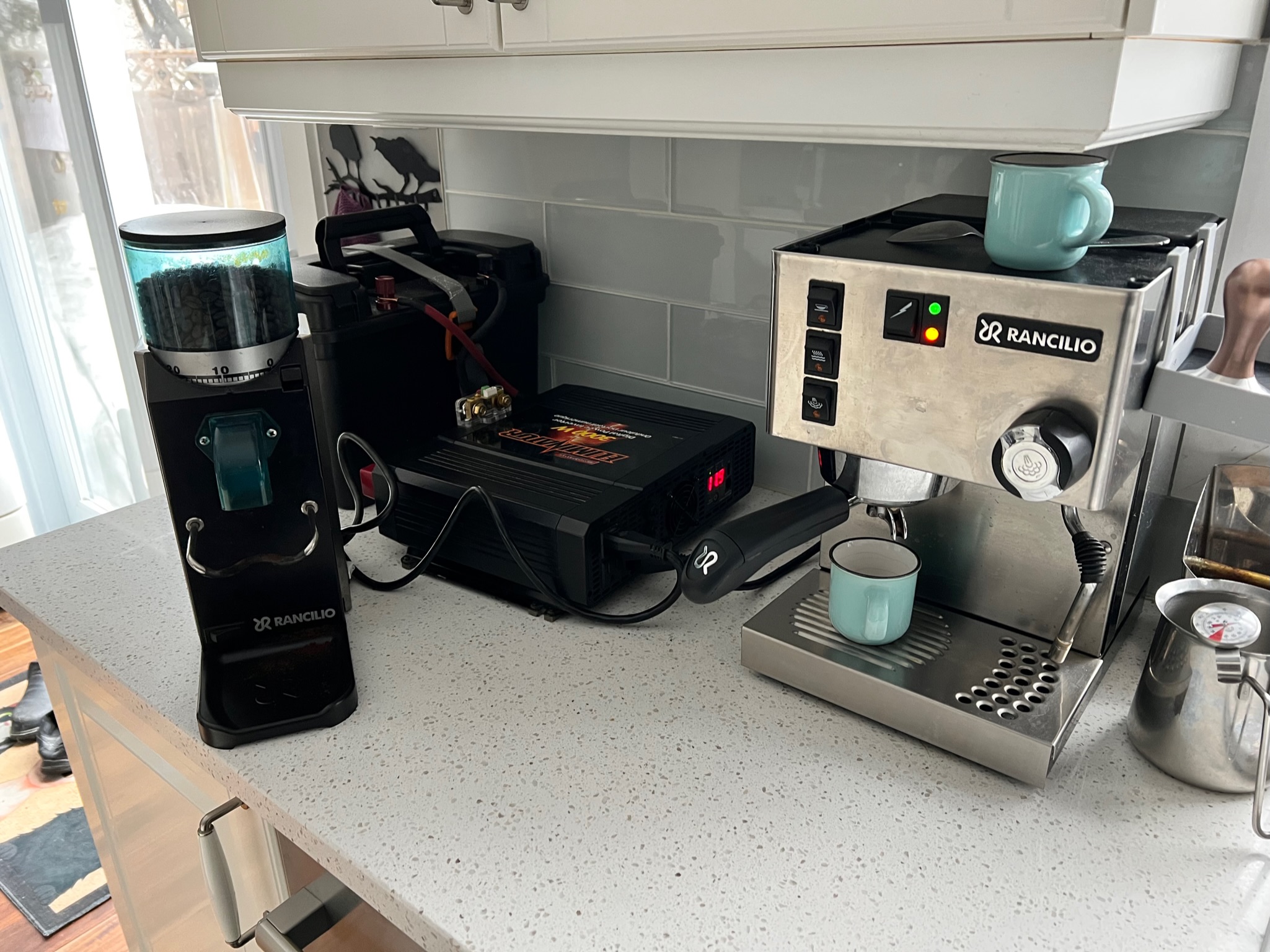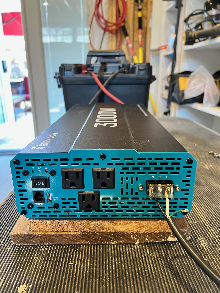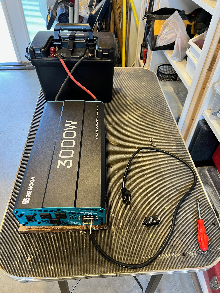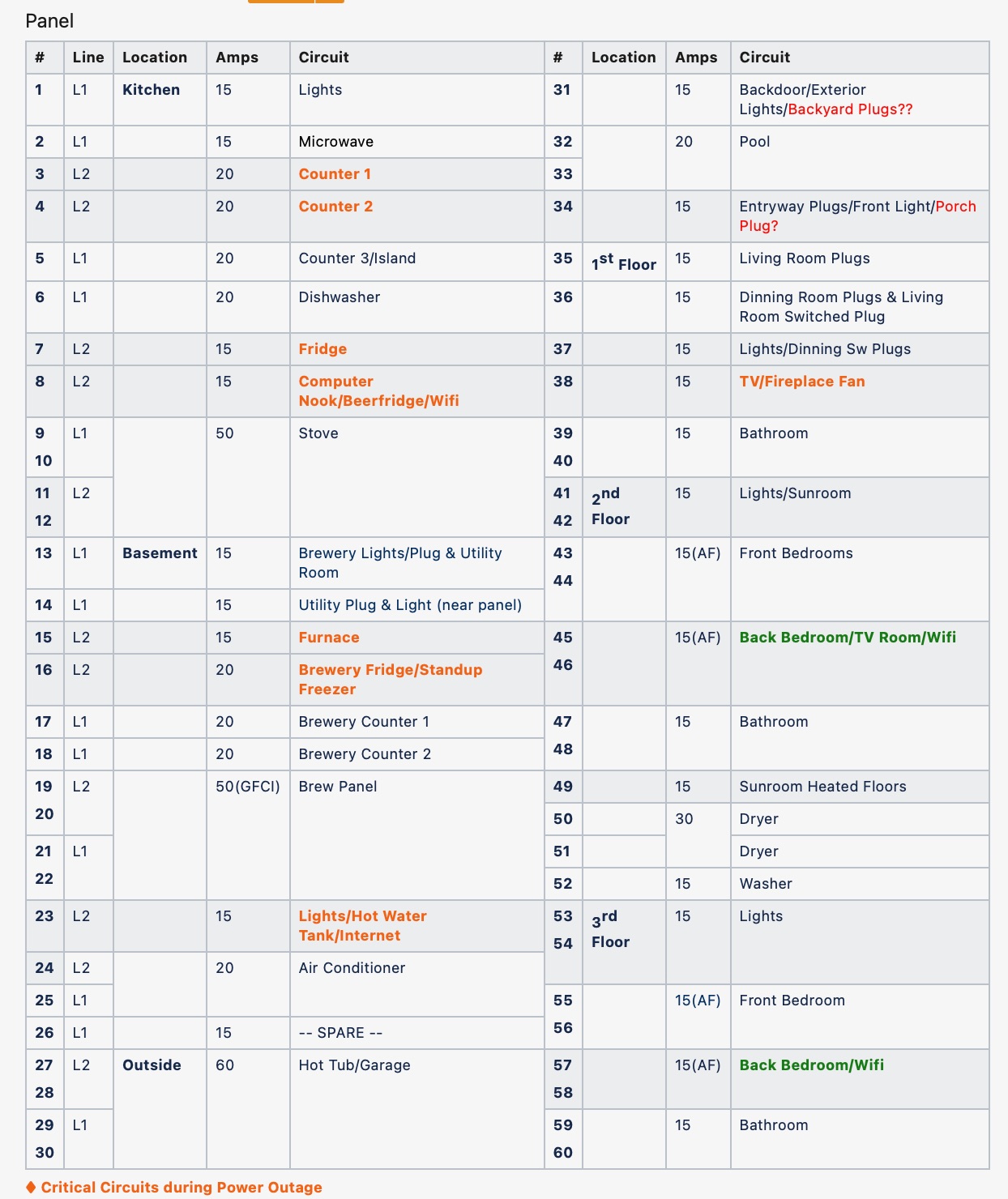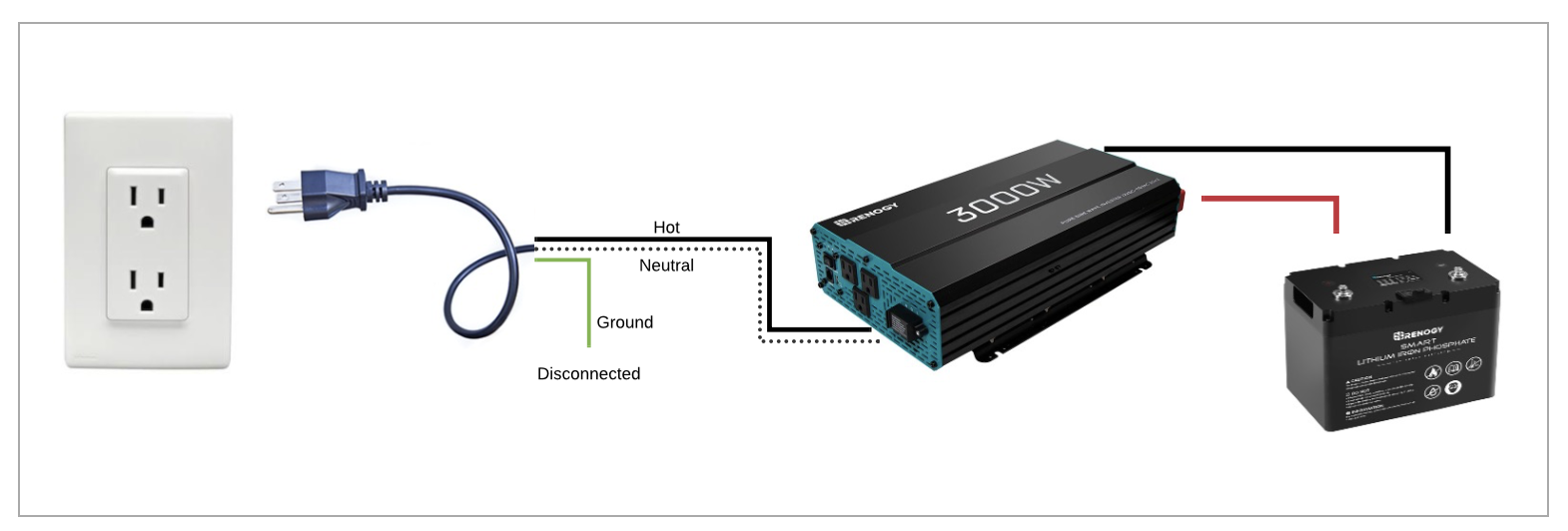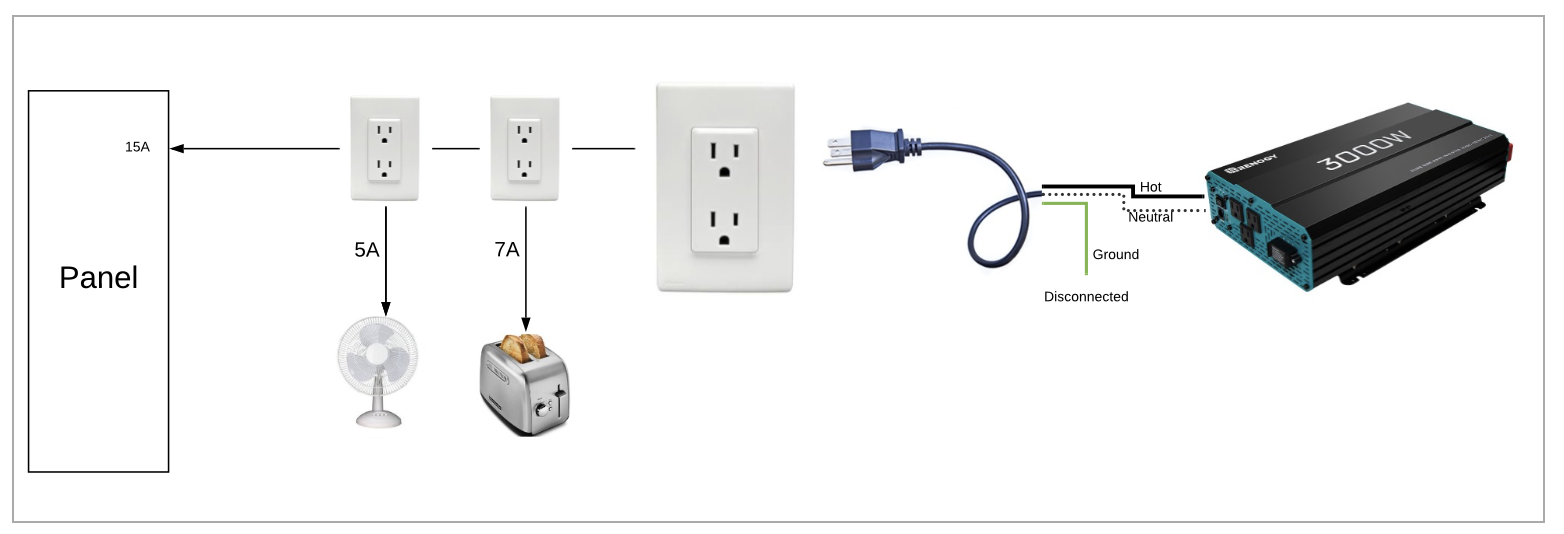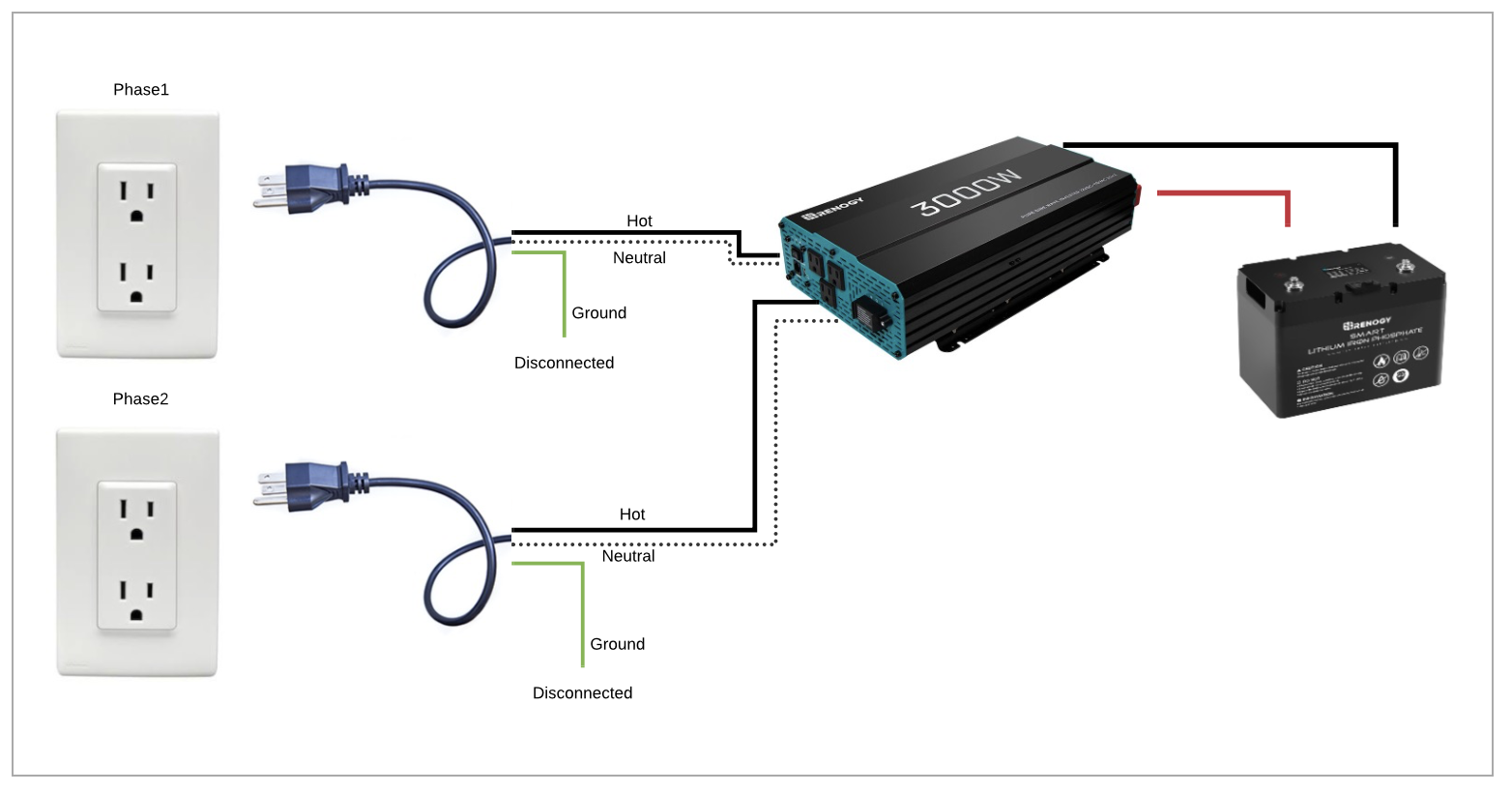Overview
The objective is to supply power to the house for critical systems in the event of a power outage. We have 2.4 kW of lithium battery power and multiple inverters. Ideally, we would like to group our batteries and connect the inverter directly to the panel and select what circuits we need to power.
We will be supplying 120VAC to only 1 phase.
Inverter Connect Directly to Appliance
Here is an example of what we used initially. Just a battery and inverter independently powering our espresso machine.
Renogy Pure Since Inverter
The inverter we are using is a Renogy 3000W pure sine inverter. This inverter has ground and neutral bonded together inside the inverter. This is good when installed in a RV but won't work when tying it to your panel.
In order to get this to work when connected to our house, we will leave the ground disconnected. The thought here is that the ground is supplied by the house which will protect our connected devices.
Panel Rework
We moved around some circuits in the panel to ensure all critical circuits are on the same phase. This is not important if you will power both phases. If you do have critical circuits on one panel it will be easier since you don't have to supply power to both phases. This however does require you to rework your fuse panel.
Here we have moved circuits that would be useful in the event of a power outage to our L2 phase. This includes heat, hot water, tv, internet and coffee!
Connecting to the Panel
To connect our inverter to the panel, we simply connected our inverter to a receptacle which was running on the desired phase (L2 in our case). Ideally, this receptacle should not be on a circuit containing a GFCI or arc fault breaker and should not have any loads between the inverter and the panel.
Please consider the following situation:
In the above situation, the 15A breaker is not protecting you. If the inverter can supply more than 15 amps, then the wires between panel and the inverter could be carrying up to 27 amps in the above diagram which would be over the rated amperage of the wires!
Connection Steps
- Turn off the main power circuit on panel!
- Turn off all circuits
- Ensure all 240v breakers are OFF. Any 240v breakers that feed sub panels can be kept on. Ensure 240v breakers on sub panels are OFF.
- Connect inverter to receptacle on desired phase. (Ideally a circuit not protected by a GFCI or arc fault breaker)
- Power on inverter
- Turn on critical circuits on panel.
Connecting to the Panel - Both Phases
To connect our inverter to both phases we will need to connect to two different receptacles on different phases. We will need to ensure all 240v breakers are turned off.
Connection Steps
- Turn off the main power circuit on panel!
- Turn off all circuits
- Ensure all 240v breakers are OFF. Any 240v breakers that feed sub panels can be kept on. Ensure 240v breakers on sub panels are OFF.
- Connect inverter to receptacle on each phase. (Ideally a circuit not protected by a GFCI or arc fault breaker)
- Power on inverter
- Turn on critical circuits on panel.
References
| Reference | URL |
|---|---|
| How to Power your House with an Inverter/Generator During a Power Outage Part 1/3 | https://www.youtube.com/watch?v=yiyri0Kb9Ww |
| How to Power your House with an Inverter/Generator During a Power Outage Part 2/3 | https://www.youtube.com/watch?v=A-OfcgU_7Fs |
| How to Power your House with an Inverter/Generator During a Power Outage Part 3/3 | https://www.youtube.com/watch?v=a5BziLclt3E&list=RDCMUCVktNhxFTBnrLfeIe1tdgSQ&index=3 |
